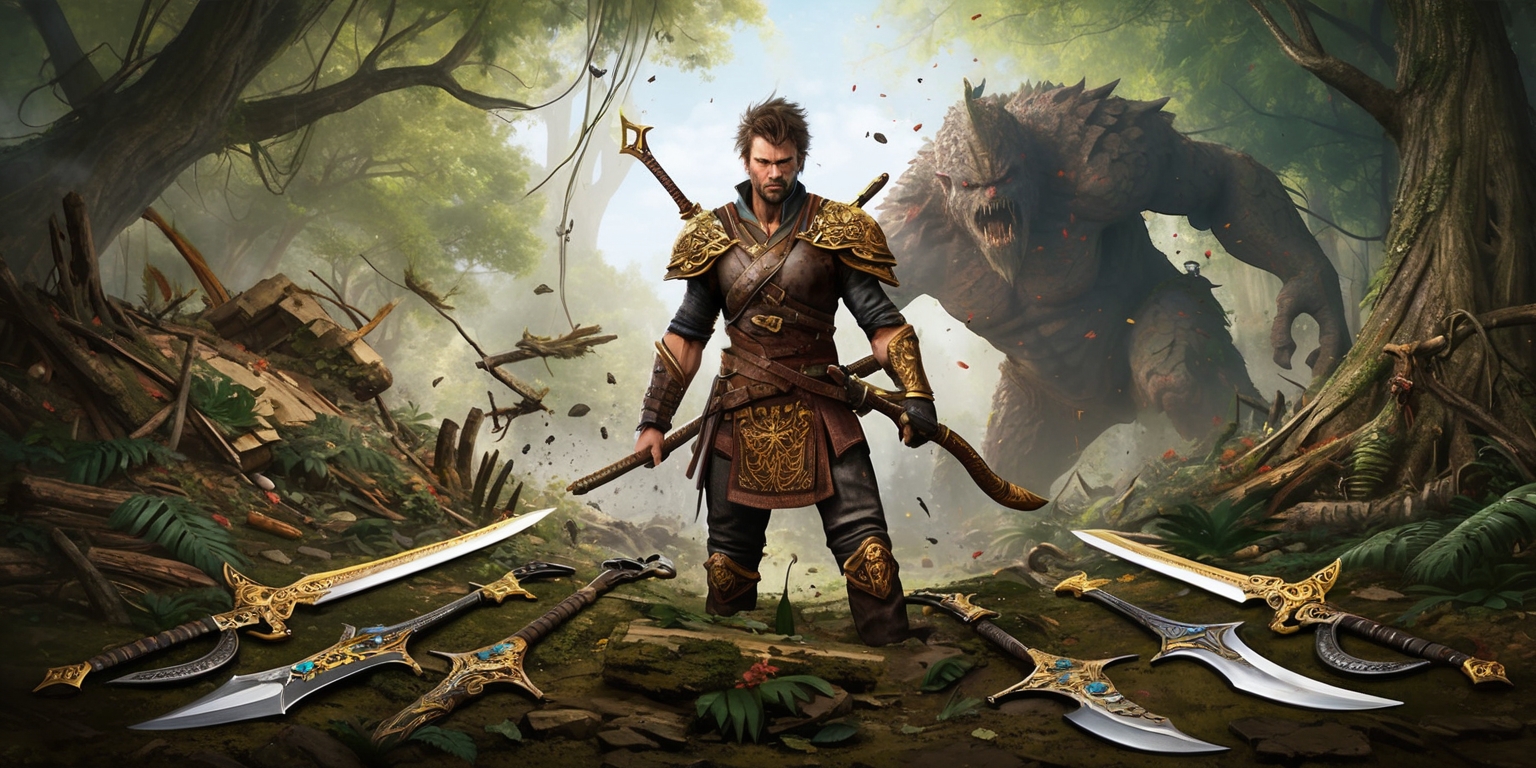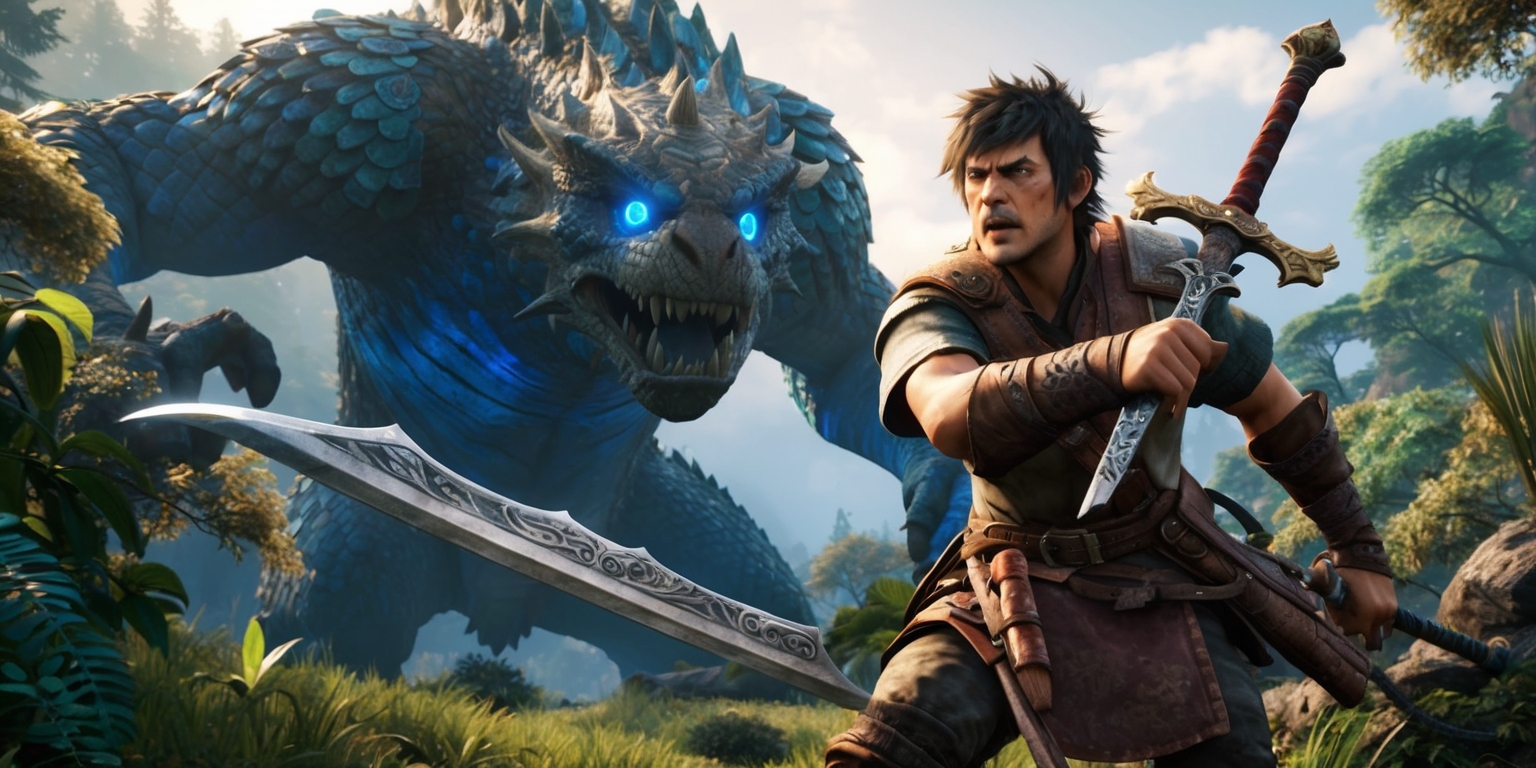Mastering the Art of Combat: A Deep Dive into Monster Hunter Wilds' Arsenal
- 0

Monster Hunter Wilds invites players into an intricate world where the art of combat It relies equally on smart planning and refined ability. Every weapon in your arsenal carries unique characteristics that define the style and approach you bring to each encounter. In this realm, the traditional idea of progression is replaced with a commitment to refining your preferred tool of battle. Instead of being left to discover new weapons as you roam, all fourteen instrument choices of combat are immediately available, inviting a process of refinement. The sheer variety caters to hunters who thrive on experimentation, ensuring that the ideal weapon is "consistently a function of individual discretion instead of" one predetermined by the game. The following sections explore the intricate facets of these weapons from diverse perspectives.
Embracing a Versatile Arsenal
The game’s design centers around the availability of a full spectrum of combat options from the outset, reflecting the developers' commitment to versatility. In Monster Hunter Wilds, the set of fourteen weapons is carefully curated to embody distinct fighting styles and practical roles when confronting monstrous adversaries. This approach encourages the user to identify their preferred tactical style early on. Every weapon has its own pace, handling, and nuances, which means that engagement with the game becomes a personal journey of experimentation. The progression is less about unlocking new potential and more about fine-tuning techniques and understanding the subtle dynamics of each weapon type. The importance placed on adaptability fosters an environment where effort, exploration, and personal style determine success, rather than strict limitations or hierarchies among the choices.
Crafting a Personal Combat Identity
The absence of later discovery challenges players to define their combat identity through continuous customization and improvement. From the beginning, hunters awaken with a full suite of weapon options that encourage tinkering, modification, and evolution of their chosen tool. The process of crafting and upgrading is woven into the gameplay, inviting players to refine their approach iteratively. Each weapon not only reflects a different handling characteristic but also carries its own rhythm and strategy, offering an immersive experience tailored to individual tastes. This makes every encounter a test of proficiency and adaptation. By carefully modifying weapons and experimenting with nuances like speed, reach, and impact, a player cultivates a unique combat personality that evolves alongside the challenges posed by the colossal creatures encountered within the game world.
Innovative Combat Engagement
The monster encounters in this realm are designed to push the limits of both player skill and weapon functionality. Unlike previous titles where new items might appear in the heat of battle, here every weapon's potential is unlocked from the start. This innovative approach underlines the game’s emphasis on mastering a tool through rigorous practice rather than relying on constant upgrades from external sources. Each combat session becomes a dance of timing and space manipulation, with hunters needing an intimate understanding of their chosen weapon's mechanics. The variation in combat rhythm—from slow, powerful strikes that demand precision to agile, rapidly executed maneuvers—offers a dynamic mix that keeps every encounter fresh. The challenge lies not in acquiring new weaponry but in delving deeper into the intricate strategies that each tool offers.
Dynamic Progression Through Modification

Monster Hunter Wilds boasts an intricate advancement framework that… built on the foundation of improvement through customization. Instead of discovering hidden armaments throughout the vast landscapes, players commit to upgrading what has been given from the very start. This structure promotes a form of excellence that stems from fostering a deep connection with the weapon itself rather than accumulating disparate abilities over time. Every upgrade goes beyond a simple upgrade—it is a celebration of effort and timing where understanding weapon idiosyncrasies becomes paramount. The crafting mechanics are meticulously intertwined with the combat system, encouraging hunters to invest time in refining their chosen tool rather than hunting for new ones. This depth of progression rewards dedication, precision, and an analytical approach to every swing and parry within the game’s bustling ecosystems.
Understanding the Rhythm of Combat
Engaging with the weapon types in Monster Hunter Wilds also means embracing the subtle rhythmic elements that each instrument of battle brings into play. The game carefully balances the concept of weight and timing, ensuring that every weapon delivers a distinct performance. Some are designed for moments that require measured pauses and deliberate impact, while others allow for rapid succession of movements, each based on a unique rhythm that aligns with the flow of the combat encounter. This dynamic interplay between tempo and technique provides a rich canvas for players to master the essence of each weapon. The timing of attacks and careful anticipation of monster behavior are at the heart of the gameplay, underscoring that every swing or parry Here's one possible rewrite that maintains the original context: "represents both a creative endeavor and a systematic practice" tactical decision within the fast-evolving battlefield.
Complex Strategies Rooted in Weapon Behavior
Each of the fourteen weapons in the game is designed to cater to a specific approach that demands a deep understanding of combat mechanics. Players often find that detailed knowledge of how each weapon responds under pressure sets the stage for creative strategies in encounters with the titanic beasts that dominate the landscape. The nuances in recovery, mobility, and damage output encourage the development of tailored tactics, where one tool might excel in navigating enemy weaknesses while another compensates with a faster response rate. Mastery in this arena stems from repetitive practice coupled with a willingness to adapt one’s approach based on situational dynamics. Ultimately, this design philosophy transforms combat from a series of predictable actions into a sophisticated dance where strategic planning and split-second decisions "has the capacity to shift momentum in the midst of" battle.
Detailed Craftsmanship in Design and Aesthetics
The visual and tactile heritage of the weapon types is given significant attention within Monster Hunter Wilds. The aesthetics of weapon design—ranging from intricate engravings to finely tuned balance—add an extra layer of immersion to the player's experience. Each weapon has been artfully rendered to evoke a sense of history and purpose, harmonizing practical combat efficiency with a distinct style. The visual feedback when executing an attack, the subtle gleam of a well-forged blade, or the rhythmic motion of a swinging club, all contribute to a sensory experience that elevates the ritual of battle. This attention to detail not only reinforces the underlying mechanics but also enriches the narrative, drawing the player deeper into the world and making every encounter a chance to appreciate both artistry and functionality.
Emphasizing Adaptability Against Evolving Adversaries
In the vibrant realm of Monster Hunter Wilds, each monstrous adversary calls for a unique tactical response. The elaborate system of fourteen distinct weapons reflects this need for diversity as different beasts display a variety of vulnerabilities. As a result, careful attention to crafting or upgrading your weapon transforms into an indispensable element in getting ready for the challenges ahead. The gameplay encourages a continuous dialogue between weapon mastery and monster behavior, ensuring that engagement in combat is never static. Players must constantly assess the strengths and limitations of their chosen tool as they explore the dynamic battlefield. The suit of available options not only ensures that every encounter can find its best match in terms of combat style but also enhances the tactical satisfaction of exploiting an enemy's weak points.
Adapting to Varied Combat Scenarios
Within Monster Hunter Wilds, each encounter is a testament to the intricate balance between offensive prowess and defensive savviness. The game has been meticulously designed to ensure that no two conflicts unfold "in much the same manner, partly owing to the" diverse weaponry at the hunter’s disposal. Some weapons are constructed for slower, more deliberate engagements that build up a crescendo of powerful strikes, while others are tailored towards evasive maneuvers and rapid counterattacks. This tailored approach to combat demands that players remain alert and adaptable, quickly switching tactics based on the threat at hand. The rewarding experience of discovering the most suitable weapon for a given scenario fosters a constant evolution in skill and strategy. Every battle becomes an opportunity to refine techniques, ensuring that even familiar strategies reveal new depths when applied with a fresh mindset.
Balancing Strengths and Nuances
The framework of Monster Hunter Wilds encourages a balanced perspective on weapon strengths and nuanced performance. There is no single weapon that overshadows the rest in terms of raw capability; instead, the game champions the notion of balance, where every weapon is designed with distinct merits and limitations. This balanced approach is a deliberate attempt to avoid homogenization of combat, ensuring that each hunter can find a personal niche no matter their preferred style. The refinement of a weapon over time emphasizes that success pivots on mastering its unique properties rather than relying on inherent superiority. This detailed calibration of attributes—from reach to recovery—is seamlessly interwoven into every battle, making the choice of weapon an integral part of a broader strategy, where every decision and upgrade contributes to evolving efficiency in combat engagements.
Nuanced Interplay Between Form and Function
The design philosophy in Monster Hunter Wilds extends to a thoughtful integration between a weapon's visual appeal and its operational performance. The aesthetic design elements are intricately connected to the weapon's function, creating a blend that feels both organic and purposeful. The visual cues not only serve an ornamental purpose but also provide players with intuitive feedback on the weapon's handling and performance characteristics. This interplay ensures that engagement in combat goes beyond mere tactical execution, transforming it into an immersive experience where every swing resonates with purpose. The harmonious balance between form and function encourages players to appreciate the craftsmanship behind each tool, leading to an enriched connection between the character and their chosen method of overcoming challenges inherent in this fantastical setting.
